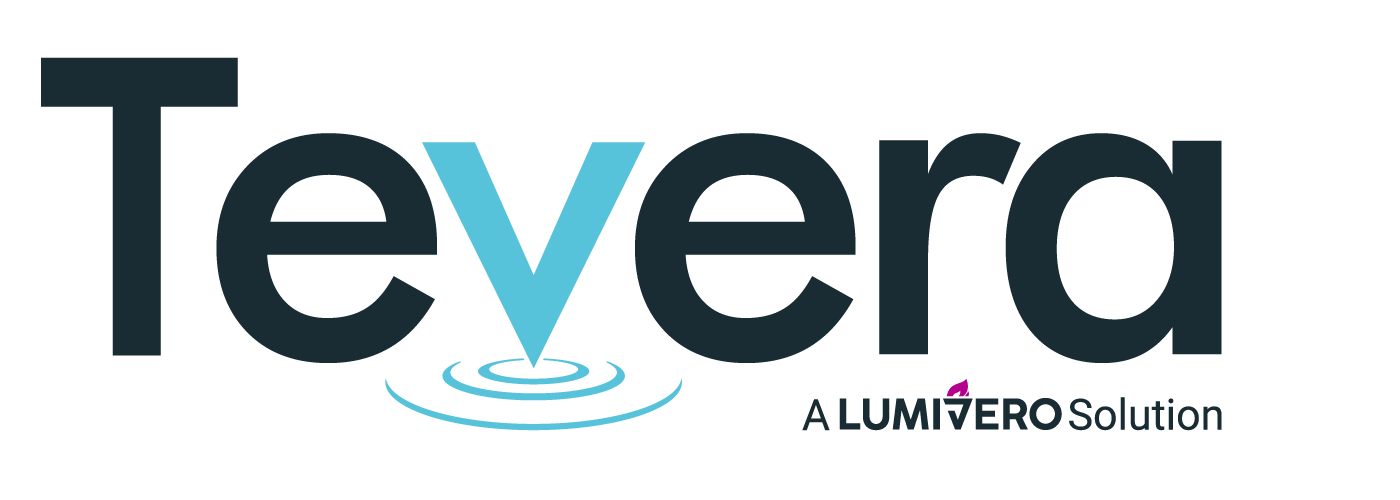CAAHEP Accreditation Requirements and Standards
Accreditation signifies that an educational institution or program offers high-quality education that adequately prepares its students to enter their chosen profession. The Commission on Accreditation of Allied Health Education Programs (CAAHEP) accreditation specifically accredits health science education programs, helping to ensure future health care professionals are meeting the standards of their profession and that the programs teaching them are doing so effectively.
Getting your program accredited requires your program and its students to comply with discipline-specific standards and guidelines. Learn more about CAAHEP accreditation standards and how to work toward program accreditation at your institution.
What is CAAHEP Accreditation?
CAAHEP is a specialized or programmatic accrediting organization. CAAHEP evaluates specific healthcare-related programs or schools within an institution. For example, a nursing program or medical school at an educational institution could be CAAHEP accreditated, though the entire institution would not. CAAHEP accredits programs, not individuals. Once graduating from an accredited program, students can obtain proper certification and licensure through the proper bodies.
To be CAAHEP accredited, your program will be evaluated to ensure it meets standards set by professionals in the specific field. The accreditation process is designed to ensure a given program is meeting the standards of the profession, ensuring students in these programs learn what they need to know and can function within their field. CAAHEP accreditation also helps assure the public that entry-level health care providers are well-prepared and qualified to be in their positions.
CAAHEP accredits thousands of programs in various health-related disciplines, including:
- Advanced cardiovascular sonographer
- Blood bank technology specialist
- Art therapist
- Anesthesiologist assistant
- Clinical research professionals
- Anesthesia technologist
- Cytotechnologist
- Kinesiotherapist
- Assistive technology practitioners
- Cardiovascular technologist
- Orthotist and prosthetist
- Perfusionist
- Recreational therapist
- Diagnostic medical sonographer
- Paramedics and emergency medical services
- Medical assistant
- Exercise science professional
- Lactation consultant
- Medical illustrator
- Neurodiagnostic technologist
- Surgical technologist
- Polysomnographic technologist
- Surgical assistant
Many of these fields require students to graduate from a CAAHEP-accredited program before applying for certification or licensure, which is a significant reason to get accredited. Accreditation also attracts new students to your program, as most prospective students seek CAAHEP-accredited health programs.
CAAHEP Accreditation Process
The CAAHEP accreditation process can seem overwhelming for prospective programs. While it does require time and dedication, the process is doable and the CAAHEP accreditation requirements ensure your program can properly prepare students for their field. Each program seeking accreditation will work directly with a Committee on Accreditation (CoA) for the given discipline throughout the process and afterward to maintain accreditation.
While profession-specific information can be found through your CoA, here are the basic elements of accreditation.
1. Request for Accreditation Services
To begin the accreditation process, you’ll submit an electronic Request for Accreditation Services (RAS) form. The RAS must include an electronic signature from your institution’s President or official representative to provide authorization. Once submitted, the CoA for your program’s discipline will review the RAS form. The CoA will contact your program to provide information regarding how to continue the process for your specific field.
2. Self-Study Report
The first official step toward accreditation involves conducting a program self-study. Your CoA will provide a study template specific to your program’s discipline. Your program should document how it meets CAAHEP Standards and Guidelines for the given profession. Once submitted, the CoA will review your self-study.
CoA representatives will be assigned to your study. They’ll review your submission and provide consultation or feedback as necessary.
Depending on the CoA, the site visit may last one to two days. It can be conducted virtually, on-site, or a combination of both.
3. CoA Site Visit
More representatives from the CoA will conduct a site visit at your institution to evaluate your program and verify information from the self-study. Typically, the CoA representatives will review program facilities and documentation and interview various people involved in the program, including students, administration, faculty, graduates and more as necessary.
Depending on the CoA, the site visit may last one to two days. It could be conducted virtually, on-site or a combination of both. The format typically varies depending on the profession and CoA needs and sometimes includes a pre-visit interview.
After the site visit, the CoA will send your program a report of its findings. After receiving the site visit report, you can respond to the findings before continuing the accreditation process.
4. CoA Recommendation
Next, the CoA will consider the site visit findings and your program’s response to either recommend your program for accreditation or to withhold or withdraw accreditation. The CoA may request additional information to help determine how compliant your program is with standards. If the CoA decides to recommend your program for accreditation, CAAHEP will review your program.
If the CoA recommends withdrawal, probation or withheld accreditation, your program will undergo due process. This allows you to request reconsideration and submit supplementary information or completely withdraw the application.
5. CAAHEP Board of Director’s Decision
The CAAHEP Board reviews each program with a CoA recommendation and makes the final accreditation decision. If your program is accredited, program directors and the institution president will receive electronic notification and accreditation statuses will be updated on the CAAHEP website.
Following initial accreditation, your CoA will monitor your program for continual compliance. Continual monitoring typically involves CAAHEP reporting like annual and progress reports to be completed and submitted on your end. Every three to five years, your program will need to renew accreditation with this process.
CAAHEP Standards and Guidelines
The CAAHEP accreditation standards are used to measure the quality of a program. Each discipline’s professionals develop the standards to ensure education programs are actually teaching students what they need to know for the given profession. The CAAHEP Board then reviews and approves the decided-upon standards. CAAHEP standards typically include guidelines for the following areas, varying depending on the discipline:
- Sponsorship
- Program goals
- Resources
- Student/graduate outcomes and evaluation
- Fair practices
- Curriculum
- Learning competencies
- And more
Accreditation standards are reviewed at least every 10 years, typically more often as technologies and procedures change. Since each discipline has different CAAHEP standards and they’re subject to change, understanding the current standards for your program is crucial.
Simplify CAAHEP Accreditation with Tevera
Earning and maintaining your accreditation status is essential for program growth and reputation. While CAAHEP accreditation reporting and assessments are required to maintain accreditation status, managing these elements can be simple with an outcomes management platform like Tevera.
With powerful reporting solutions, our platform will support you through earning and maintaining accreditation, tracking assessment data, delivering rubrics and driving student success. As you track your compliance with CAAHEP standards, you’ll also gain visibility into student outcomes in relation to program standards to ensure everyone is on track.
To learn about more ways Tevera can help your program with CAAHEP accreditation, schedule an overview with us today.
Interested in Learning About Other Accreditation Bodies Tevera Supports?
SOLUTIONS
RELATED POSTS
PRODUCT OVERVIEW
See how Tevera can elevate your program.
CAAHEP Accreditation Requirements and Standards
Accreditation signifies that an educational institution or program offers high-quality education that adequately prepares its students to enter their chosen profession. The Commission on Accreditation of Allied Health Education Programs (CAAHEP) accreditation specifically accredits health science education programs, helping to ensure future health care professionals are meeting the standards of their profession and that the programs teaching them are doing so effectively.
Getting your program accredited requires your program and its students to comply with discipline-specific standards and guidelines. Learn more about CAAHEP accreditation standards and how to work toward program accreditation at your institution.
What is CAAHEP Accreditation?
CAAHEP is a specialized or programmatic accrediting organization. CAAHEP evaluates specific healthcare-related programs or schools within an institution. For example, a nursing program or medical school at an educational institution could be CAAHEP accreditated, though the entire institution would not. CAAHEP accredits programs, not individuals. Once graduating from an accredited program, students can obtain proper certification and licensure through the proper bodies.
To be CAAHEP accredited, your program will be evaluated to ensure it meets standards set by professionals in the specific field. The accreditation process is designed to ensure a given program is meeting the standards of the profession, ensuring students in these programs learn what they need to know and can function within their field. CAAHEP accreditation also helps assure the public that entry-level health care providers are well-prepared and qualified to be in their positions.
CAAHEP accredits thousands of programs in various health-related disciplines, including:
- Advanced cardiovascular sonographer
- Blood bank technology specialist
- Art therapist
- Anesthesiologist assistant
- Clinical research professionals
- Anesthesia technologist
- Cytotechnologist
- Kinesiotherapist
- Assistive technology practitioners
- Cardiovascular technologist
- Orthotist and prosthetist
- Perfusionist
- Recreational therapist
- Diagnostic medical sonographer
- Paramedics and emergency medical services
- Medical assistant
- Exercise science professional
- Lactation consultant
- Medical illustrator
- Neurodiagnostic technologist
- Surgical technologist
- Polysomnographic technologist
- Surgical assistant
Many of these fields require students to graduate from a CAAHEP-accredited program before applying for certification or licensure, which is a significant reason to get accredited. Accreditation also attracts new students to your program, as most prospective students seek CAAHEP-accredited health programs.
CAAHEP Accreditation Process
The CAAHEP accreditation process can seem overwhelming for prospective programs. While it does require time and dedication, the process is doable and the CAAHEP accreditation requirements ensure your program can properly prepare students for their field. Each program seeking accreditation will work directly with a Committee on Accreditation (CoA) for the given discipline throughout the process and afterward to maintain accreditation.
While profession-specific information can be found through your CoA, here are the basic elements of accreditation.
1. Request for Accreditation Services
To begin the accreditation process, you’ll submit an electronic Request for Accreditation Services (RAS) form. The RAS must include an electronic signature from your institution’s President or official representative to provide authorization. Once submitted, the CoA for your program’s discipline will review the RAS form. The CoA will contact your program to provide information regarding how to continue the process for your specific field.
2. Self-Study Report
The first official step toward accreditation involves conducting a program self-study. Your CoA will provide a study template specific to your program’s discipline. Your program should document how it meets CAAHEP Standards and Guidelines for the given profession. Once submitted, the CoA will review your self-study.
CoA representatives will be assigned to your study. They’ll review your submission and provide consultation or feedback as necessary.
Depending on the CoA, the site visit may last one to two days. It can be conducted virtually, on-site, or a combination of both.
3. CoA Site Visit
More representatives from the CoA will conduct a site visit at your institution to evaluate your program and verify information from the self-study. Typically, the CoA representatives will review program facilities and documentation and interview various people involved in the program, including students, administration, faculty, graduates and more as necessary.
Depending on the CoA, the site visit may last one to two days. It could be conducted virtually, on-site or a combination of both. The format typically varies depending on the profession and CoA needs and sometimes includes a pre-visit interview.
After the site visit, the CoA will send your program a report of its findings. After receiving the site visit report, you can respond to the findings before continuing the accreditation process.
4. CoA Recommendation
Next, the CoA will consider the site visit findings and your program’s response to either recommend your program for accreditation or to withhold or withdraw accreditation. The CoA may request additional information to help determine how compliant your program is with standards. If the CoA decides to recommend your program for accreditation, CAAHEP will review your program.
If the CoA recommends withdrawal, probation or withheld accreditation, your program will undergo due process. This allows you to request reconsideration and submit supplementary information or completely withdraw the application.
5. CAAHEP Board of Director’s Decision
The CAAHEP Board reviews each program with a CoA recommendation and makes the final accreditation decision. If your program is accredited, program directors and the institution president will receive electronic notification and accreditation statuses will be updated on the CAAHEP website.
Following initial accreditation, your CoA will monitor your program for continual compliance. Continual monitoring typically involves CAAHEP reporting like annual and progress reports to be completed and submitted on your end. Every three to five years, your program will need to renew accreditation with this process.
CAAHEP Standards and Guidelines
The CAAHEP accreditation standards are used to measure the quality of a program. Each discipline’s professionals develop the standards to ensure education programs are actually teaching students what they need to know for the given profession. The CAAHEP Board then reviews and approves the decided-upon standards. CAAHEP standards typically include guidelines for the following areas, varying depending on the discipline:
- Sponsorship
- Program goals
- Resources
- Student/graduate outcomes and evaluation
- Fair practices
- Curriculum
- Learning competencies
- And more
Accreditation standards are reviewed at least every 10 years, typically more often as technologies and procedures change. Since each discipline has different CAAHEP standards and they’re subject to change, understanding the current standards for your program is crucial.
Simplify CAAHEP Accreditation with Tevera
Earning and maintaining your accreditation status is essential for program growth and reputation. While CAAHEP accreditation reporting and assessments are required to maintain accreditation status, managing these elements can be simple with an outcomes management platform like Tevera.
With powerful reporting solutions, our platform will support you through earning and maintaining accreditation, tracking assessment data, delivering rubrics and driving student success. As you track your compliance with CAAHEP standards, you’ll also gain visibility into student outcomes in relation to program standards to ensure everyone is on track.
To learn about more ways Tevera can help your program with CAAHEP accreditation, schedule an overview with us today.
Interested in Learning About Other Accreditation Bodies Tevera Supports?
CAAHEP Accreditation Requirements and Standards
Accreditation signifies that an educational institution or program offers high-quality education that adequately prepares its students to enter their chosen profession. The Commission on Accreditation of Allied Health Education Programs (CAAHEP) accreditation specifically accredits health science education programs, helping to ensure future health care professionals are meeting the standards of their profession and that the programs teaching them are doing so effectively.
Getting your program accredited requires your program and its students to comply with discipline-specific standards and guidelines. Learn more about CAAHEP accreditation standards and how to work toward program accreditation at your institution.
What is CAAHEP Accreditation?
CAAHEP is a specialized or programmatic accrediting organization. CAAHEP evaluates specific healthcare-related programs or schools within an institution. For example, a nursing program or medical school at an educational institution could be CAAHEP accreditated, though the entire institution would not. CAAHEP accredits programs, not individuals. Once graduating from an accredited program, students can obtain proper certification and licensure through the proper bodies.
To be CAAHEP accredited, your program will be evaluated to ensure it meets standards set by professionals in the specific field. The accreditation process is designed to ensure a given program is meeting the standards of the profession, ensuring students in these programs learn what they need to know and can function within their field. CAAHEP accreditation also helps assure the public that entry-level health care providers are well-prepared and qualified to be in their positions.
CAAHEP accredits thousands of programs in various health-related disciplines, including:
- Advanced cardiovascular sonographer
- Blood bank technology specialist
- Art therapist
- Anesthesiologist assistant
- Clinical research professionals
- Anesthesia technologist
- Cytotechnologist
- Kinesiotherapist
- Assistive technology practitioners
- Cardiovascular technologist
- Orthotist and prosthetist
- Perfusionist
- Recreational therapist
- Diagnostic medical sonographer
- Paramedics and emergency medical services
- Medical assistant
- Exercise science professional
- Lactation consultant
- Medical illustrator
- Neurodiagnostic technologist
- Surgical technologist
- Polysomnographic technologist
- Surgical assistant
Many of these fields require students to graduate from a CAAHEP-accredited program before applying for certification or licensure, which is a significant reason to get accredited. Accreditation also attracts new students to your program, as most prospective students seek CAAHEP-accredited health programs.
CAAHEP Accreditation Process
The CAAHEP accreditation process can seem overwhelming for prospective programs. While it does require time and dedication, the process is doable and the CAAHEP accreditation requirements ensure your program can properly prepare students for their field. Each program seeking accreditation will work directly with a Committee on Accreditation (CoA) for the given discipline throughout the process and afterward to maintain accreditation.
While profession-specific information can be found through your CoA, here are the basic elements of accreditation.
1. Request for Accreditation Services
To begin the accreditation process, you’ll submit an electronic Request for Accreditation Services (RAS) form. The RAS must include an electronic signature from your institution’s President or official representative to provide authorization. Once submitted, the CoA for your program’s discipline will review the RAS form. The CoA will contact your program to provide information regarding how to continue the process for your specific field.
2. Self-Study Report
The first official step toward accreditation involves conducting a program self-study. Your CoA will provide a study template specific to your program’s discipline. Your program should document how it meets CAAHEP Standards and Guidelines for the given profession. Once submitted, the CoA will review your self-study.
CoA representatives will be assigned to your study. They’ll review your submission and provide consultation or feedback as necessary.
Depending on the CoA, the site visit may last one to two days. It can be conducted virtually, on-site, or a combination of both.
3. CoA Site Visit
More representatives from the CoA will conduct a site visit at your institution to evaluate your program and verify information from the self-study. Typically, the CoA representatives will review program facilities and documentation and interview various people involved in the program, including students, administration, faculty, graduates and more as necessary.
Depending on the CoA, the site visit may last one to two days. It could be conducted virtually, on-site or a combination of both. The format typically varies depending on the profession and CoA needs and sometimes includes a pre-visit interview.
After the site visit, the CoA will send your program a report of its findings. After receiving the site visit report, you can respond to the findings before continuing the accreditation process.
4. CoA Recommendation
Next, the CoA will consider the site visit findings and your program’s response to either recommend your program for accreditation or to withhold or withdraw accreditation. The CoA may request additional information to help determine how compliant your program is with standards. If the CoA decides to recommend your program for accreditation, CAAHEP will review your program.
If the CoA recommends withdrawal, probation or withheld accreditation, your program will undergo due process. This allows you to request reconsideration and submit supplementary information or completely withdraw the application.
5. CAAHEP Board of Director’s Decision
The CAAHEP Board reviews each program with a CoA recommendation and makes the final accreditation decision. If your program is accredited, program directors and the institution president will receive electronic notification and accreditation statuses will be updated on the CAAHEP website.
Following initial accreditation, your CoA will monitor your program for continual compliance. Continual monitoring typically involves CAAHEP reporting like annual and progress reports to be completed and submitted on your end. Every three to five years, your program will need to renew accreditation with this process.
CAAHEP Standards and Guidelines
The CAAHEP accreditation standards are used to measure the quality of a program. Each discipline’s professionals develop the standards to ensure education programs are actually teaching students what they need to know for the given profession. The CAAHEP Board then reviews and approves the decided-upon standards. CAAHEP standards typically include guidelines for the following areas, varying depending on the discipline:
- Sponsorship
- Program goals
- Resources
- Student/graduate outcomes and evaluation
- Fair practices
- Curriculum
- Learning competencies
- And more
Accreditation standards are reviewed at least every 10 years, typically more often as technologies and procedures change. Since each discipline has different CAAHEP standards and they’re subject to change, understanding the current standards for your program is crucial.
Simplify CAAHEP Accreditation with Tevera
Earning and maintaining your accreditation status is essential for program growth and reputation. While CAAHEP accreditation reporting and assessments are required to maintain accreditation status, managing these elements can be simple with an outcomes management platform like Tevera.
With powerful reporting solutions, our platform will support you through earning and maintaining accreditation, tracking assessment data, delivering rubrics and driving student success. As you track your compliance with CAAHEP standards, you’ll also gain visibility into student outcomes in relation to program standards to ensure everyone is on track.
To learn about more ways Tevera can help your program with CAAHEP accreditation, schedule an overview with us today.





















